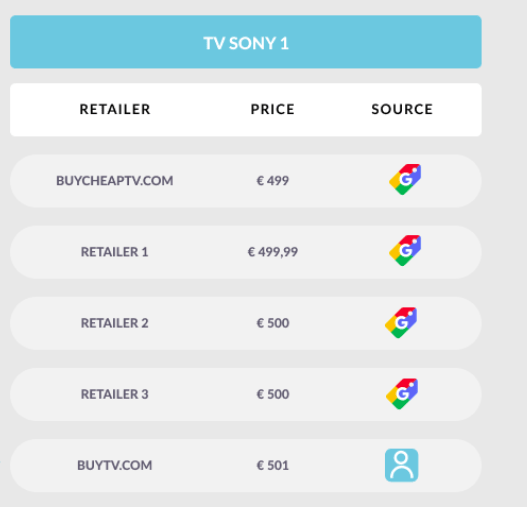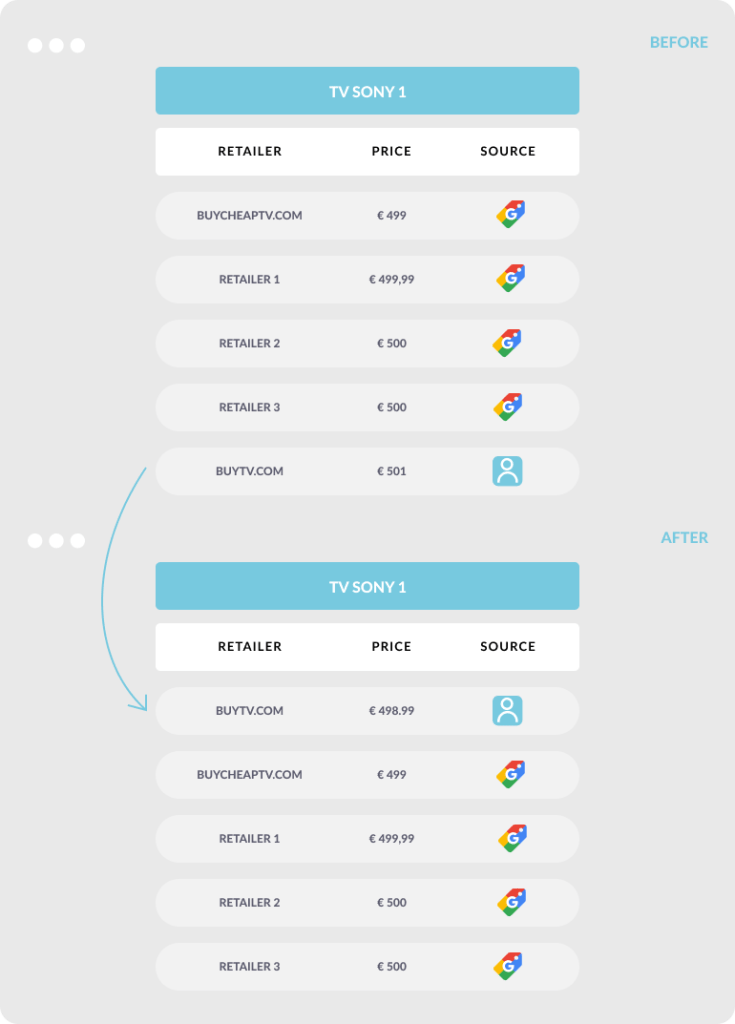Running an online store requires the selection and implementation of an appropriate pricing strategy. It will largely determine the interest of consumers in the brand’s offer and its financial and marketing results. In our guide, you will learn what the most popular e-commerce pricing strategies are and how to implement them using price management tools.
E-commerce is by far one of the most dynamic market sectors. If you want to succeed, you have to have a comprehensive and well-presented offer, intuitive design and flawless purchasing process, and, of course, optimally calculated prices. Here, you have at least seven possible options.
The 7 most common pricing strategies for online stores
By specifying a pricing strategy for their online store, the seller retains full control of the profitability of the business. It is not a coincidence that determines the prices of their products, but a well-thought-out and planned concept. The most popular pricing solutions in this area include:
Everyday Low Pricing Strategy
In this strategy, the store always offers relatively low prices compared to the market average. They are so attractive that the seller does not use any aggressive promotional activities. This strategy has a positive effect on the predictability of business results and customer loyalty.
High-Low Strategy
The store sets basic prices at a relatively high level and often uses periodic promotions on selected goods. Thanks to very attractive discounts, the image of a cheap seller is often transferred to other products in the consumer’s mind.
Cost-plus strategy
Here, the store uses simple calculations to determine the final price of the product. All you need to know to use this strategy is the cost of acquiring the goods and the target margin level to set the final price. Due to its simplicity, this strategy is very popular, especially among smaller retailers, although today, it’s usually ineffective.
Competition-oriented strategy
The store is guided by benchmarks such as the cheapest competitor, average market price, or market leader’s price. The strategy is to identify your strengths and weaknesses and adapt to the selected segment.
Strategy based on maximizing the value of the product (value-based pricing)
The store estimates the value that the product has for the consumer and, on this basis, determines its price. It also takes into account its own strengths, which allow it to increase the profit margin additionally.
Strategy based on suggested prices
The store is simply guided by the prices recommended by the manufacturer or distributor. The advantage of this strategy is its simplicity and building the image of a trusted supplier. On the downside, this strategy ignores the current market situation.
Context-oriented strategy
The store takes into account the current market conditions when pricing its products. This model requires perfect knowledge of business and awareness of current market trends.
Of course, you don’t have to opt for just one of these strategies. They can be used in conjunction with others. To find out more about each of these strategies, read linked articles that show what they are all about and how they can be implemented in the e-commerce sector.
Example of using different pricing strategies
Let’s compare some of these strategies by using an example of buytv.com – an online shop that offers TV Sony 1 for 501 euro. Let’s assume its purchase price is 460 euro:

How could the price change depending on a pricing strategy it decided to pursue?
- If it decided to use Everyday Low Prices strategy, it could lower a price a little to make it look cheap in comparison to competitors. The new price could be 498 euro.
- If it decided for High-Low pricing, the price would vary – from being higher most of the time (e.g. 10 euro) to being significantly lower, e.g. 470 euro.
- If buytv.com decided for the cost plus strategy, it would simply add the target markup or margin. If it was 15% markup, the new price would be 529 euro.
- For the competiton-based or context-oriented strategy, the company would probably try to be the cheapest one without losing too much of its margin. It would probably set a price at 498.99 euro to gain the top of the ranking:

How to implement the selected pricing strategy thanks to price management tools
Professional pricing tools will help you implement a given pricing strategy. They are used to collect and organize data from various sources available on the web. You will make perfect use of them, no matter which model you choose for your online store.
Price monitoring tools, such as Dealavo, are especially useful in the competition-oriented strategy. They allow identifying the store’s position on the market. Thanks to them, you can easily and conveniently determine which products in your offer are the cheapest and which are the most expensive compared to other sellers. You have at your disposal data such as the ratio of your prices to the market average, standard deviation, and detailed prices of competitive stores.
The Everyday Low Price and High-Low strategies are, in a way, derivatives of the competition-oriented model. In the former case, monitoring tools will allow you to keep the average prices of the entire assortment low compared to the market. In the latter, you will be able to dynamically manipulate prices in two situations:
- When the prices of not-on-sale products fall below the market average and need to be increased
- When the prices of discounted products are no longer competitive and need to be lowered
Price monitoring tools can also be used in the strategy based on maximizing the value of products. For example, you will need data on goods that your store sells as the only one on the market or provides prices much lower than the competition. You can also raise the margin and increase sales efficiency in such cases.
It is also worth taking an interest in the use of professional price monitoring tools in the case of context- and cost-oriented strategies. In the first one, you will be able to detect product shortages in competitive stores and identify seasonal trends. In the latter, the right application will allow you to keep your finger on the pulse when it comes to the costs of buying goods from a producer or supplier, thus opening the field for price negotiations.
Pricing strategies in e-commerce – summary
Knowing the most important pricing strategies used in e-commerce, you can easily choose the perfect model for your online store. Remember to make good use of the professional price monitoring tool, such as our partner Dealavo, during its implementation and execution!
About the author

Aleksandra is Marketing Manager at Dealavo – a company offering price monitoring and dynamic pricing tool. She regularly writes articles about pricing in e-commerce. Aleksandra graduated from Warsaw School of Economics and Wroclaw University of Economics where she deepened her knowledge about marketing, market analysis, finance and pricing.
Main image by loufre on Pixabay
